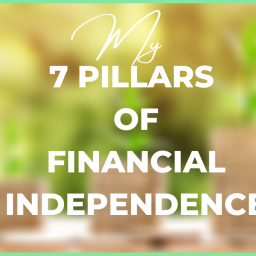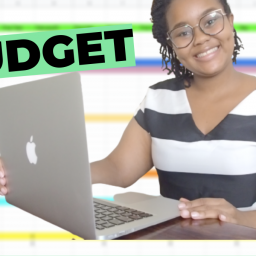
Sinking funds are a great tool to incorporate into your budget. Budgeting is one of the steps towards financial freedom that I’ve talked about before. Sinking funds can take financial planning to the next level.
Table of Contents
What is a sinking fund?
Money set aside to pay off a debt or a bond. Generally, it is used by companies that have some form of debt to gradually save the money and avoid paying a huge sum at maturity.
Sinking funds and personal finances
The principle of sinking funds is to treat all the money you will spend as a future debt that you have to pay off. With that in mind, set aside a fixed amount of money on a regular basis to pay off that future debt easily.
What’s the difference between a sinking fund and a traditional savings fund?
The purpose for each is different.
Savings are for building wealth and financial freedom so the plan is not to eat into your savings. On the other hand, sinking funds are a way to organize money that was going to be spent anyway.
Emergency funds vs sinking funds
Emergency funds are purely for emergencies. You don’t know when you’ll need the money or how much. Sinking funds are for planned expenses. So, sinking funds are also different from your emergency fund.
There may be cases where you might need to dip into your emergency savings in addition to the sinking fund. E.g. You could have a sinking fund for new car tyres but experience an unexpected car breakdown. The emergency fund can cover the breakdown.
Why have a sinking fund?
I’ll use an example:
Let’s say you save KES 15,000 every month. At the end of the year, you’ve saved KES 180,000.
You can spend this money however you like. You can even pay for some car repairs or a trip in cash.
The alternative way to approach saving would be to divide this amount into categories:
KES 5000- house makeover
KES 2500- house repairs
KES 2500- car repairs
KES 2000- travel
KES 2000- medical expenses
KES 1000- gifts
By the end of the year you’ll have:
KES 60,000 – house makeover
KES 30,000- house repairs
KES 30,000- car repairs
KES 24,000- travel
KES 24,000- medical expenses
KES 12,000- gifts
The amount you’ve saved hasn’t changed but it cushions different areas in your life in a clearer manner.
How to create a sinking fund
- Estimate how much you’ll need for the planned expense.
- Divide that amount by the number of months leading up to that payment.
This is the amount you’ll set aside each month. You can also work with weeks if that is easier for you.
It might also help to organize them based on their frequency: recurring expense vs one time payments or events.
How many sinking funds should I have?
As many as you’d like. It all depends on what you spend your money on.
My sinking funds are part of my budget so even if it is a quarterly or yearly payment, I’d rather set aside the amount on a monthly basis.
Examples of sinking funds
- Vacation
- Self-employment tax
- Home makeover
- Car fund
- Christmas and birthday gifts
- Medical expenses e.g. a planned dental procedures, glasses etc
- Insurance
Below are some ways to use sinking funds:
- For planned expenses
Sinking funds come in handy for planned expenses like trips or even school fees. In some cases, you might even get a discount if you pay in lump sum.
This system also works well for self employment taxes. If you have a general idea of how much taxes will pay, you can set aside a little more than that on a monthly basis so that when the time comes, the pinch is a little softer. (Speaking of which, I hope you’ve filed your tax returns. Deadline is on 30th June !)
- For potential expenses
This is where sinking funds behave a bit like emergency funds. You do not have to spend the money if that particular need does not arise. For example, I like to have a sinking fund for gifts in case I’ll be chipping in for my friend’s birthday gift or I want to pick something up for my family when I’m at the mall.
- To gift yourself
If you feel guilty for impulse shopping, sinking funds are a great tool. You can create a sinking fund for that hairstyle, handbag, camera or laptop.
Michelle likes to call sinking funds “budgeting for guilt free spending.”
Where to keep your sinking fund
- Some banks allow you to divide your current account into sections for different purposes.
- Alternatively, You can keep the total savings in one account as long as you keep track of your allocations per category.A regular savings account or money market fund will do.
Additional Resources on sinking funds
I found an extremely impressive budgeting video by Alena Maze on YouTube. She shares some great examples on how to develop a detailed budget including multiple sinking funds.
Do you have any sinking funds ? Let me know down below!
Thank you so much for stopping by.
‘Always remember that your hair is your crown and your body is your temple; embrace it , love it and take care of it.’
God bless you.





Love this! Thank you for sharing.
Glad you liked it . Thank you !😊
This is really good content. Financial education is necessary.
Thank you ❤️